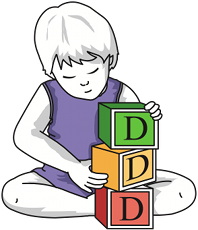A very exciting initiative recently announced……..
 Global Genes Partners With SWAN USA To Help Undiagnosed Rare Disease Patients Seek A Medical Diagnosis Through Free Whole Exome Sequencing Program
Global Genes Partners With SWAN USA To Help Undiagnosed Rare Disease Patients Seek A Medical Diagnosis Through Free Whole Exome Sequencing Program
The Global Genes Project, a non-profit rare disease advocacy organisation and Syndromes Without A Name USA (SWAN USA), another non-profit support organisation for patients with undiagnosed syndromes, are funding an initiative to provide 30 patients free whole exome sequencing.
Full story here.
—————————————
Similar initiatives in the UK include Genomics England and Deciphering Developmental Disorders.
—————————————
Is there a need for ‘next generation diagnostics’ for rare skeletal diseases?
Yes of course there is; this is a large group of clinically variable and genetically heterogeneous diseases, moreover, many of the candidate genes are very large and have numerous exons.
The Greenwood Genetic Center has recently developed and employed a “NGS Skeletal Dysplasia Panel”. The 10 genes included on the panel account for more than 30 distinct clinical phenotypes. They have previously suggested that an estimated 90% of individuals with a skeletal dysplasia have a mutation in one of these ten genes. Whilst this number is likely to be optimistic, and indeed their own study suggest 45% of patients is a more accurate figure, it non-the-less suggests a good clinical utility for next generation diagnostics for rare skeletal diseases.
See study Greenberg NGS Panel study here AMP2013_MJ-Basehore.
Other companies offering NGS diagnostics include:-
Connective Tissue Gene Tests here (USA).
Insight Medical Genetics here (USA).
Apser Reprogenetics here (Estonia).
Emory Genetics Laboratory here, which includes 163 target genes. They also offer an MED specific panel of all 7 genes (USA).
Munroe-Meyer Institute here (USA).



